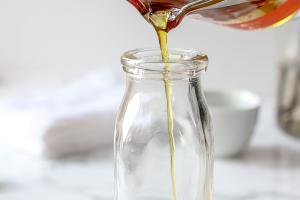DIY Olive Oil Furniture Polish: Easy Recipes & Benefits

-
Quick Links:
- Introduction to Olive Oil Furniture Polish
- Benefits of Using Olive Oil for Furniture Polish
- Ingredients Needed
- Step-by-Step Guide to Making Furniture Polish
- Expert Tips for Best Results
- Case Studies: Real-World Applications
- FAQs
Introduction to Olive Oil Furniture Polish
Furniture maintenance is crucial for preserving the beauty and longevity of wooden pieces in our homes. While commercial furniture polishes are widely available, many contain chemicals that can be harmful to both the environment and our health. Enter olive oil, a natural ingredient that not only nourishes wood but also provides a beautiful shine. In this article, we will explore how to make furniture polish using olive oil, its benefits, and expert tips for application.
Benefits of Using Olive Oil for Furniture Polish
Using olive oil as a furniture polish comes with a plethora of benefits:
- Natural Shine: Olive oil provides a warm, natural shine that enhances the beauty of wood.
- Non-toxic: Unlike many chemical-based polishes, olive oil is safe for your home and family.
- Moisturizing Properties: It helps to keep wood from drying out and cracking, ensuring longevity.
- Cost-effective: Olive oil is typically inexpensive compared to commercial products.
- Eco-friendly: Using natural ingredients reduces your carbon footprint.
Ingredients Needed
To make your own olive oil furniture polish, you will need the following ingredients:
- 1 cup of olive oil
- 1/2 cup of white vinegar or lemon juice (optional for cleaning properties)
- Essential oils for fragrance (e.g., lavender, lemon, or eucalyptus) - optional
- A clean spray bottle or a jar with a lid
Step-by-Step Guide to Making Furniture Polish
Follow these simple steps to create your olive oil furniture polish:
Step 1: Gather Your Ingredients
Ensure that you have all the necessary ingredients and tools ready before starting. This will make the process smoother.
Step 2: Combine Ingredients
In a bowl, mix together the olive oil and white vinegar (or lemon juice). The vinegar helps to cut through any grime and adds extra cleaning power.
Step 3: Add Essential Oils
If you wish to add fragrance, include a few drops of your chosen essential oil. This will give your polish a pleasant scent while polishing.
Step 4: Transfer to Storage Container
Pour the mixture into your spray bottle or jar, and secure the lid tightly. Shake gently to combine.
Step 5: Application
To use, spray a small amount onto a soft cloth and gently wipe down your furniture. Buff with a clean, dry cloth for a lovely shine.
Expert Tips for Best Results
- Test on a Small Area: Always test your polish on an inconspicuous area of your furniture to ensure compatibility.
- Use Sparingly: A little goes a long way. Over-applying can lead to a greasy residue.
- Regular Maintenance: Use the polish regularly to maintain the luster of your furniture.
- Store Properly: Keep your polish in a cool, dark place to prolong its shelf life.
Case Studies: Real-World Applications
Several users have reported significant improvements in their furniture's appearance and durability after switching to olive oil polish. A case study involving a family who transitioned from commercial products to homemade olive oil polish showed:
- Improved Shine: Users noted a visible difference in shine and texture.
- Reduced Allergies: Family members with sensitivities experienced fewer allergic reactions.
- Cost Savings: The family saved money over time by making their own polish instead of purchasing commercial options.
FAQs
1. Can I use any type of olive oil for furniture polish?
While any olive oil can work, extra virgin olive oil is preferred for its higher quality and purity.
2. Is it safe to use olive oil on all types of wood?
Olive oil is safe for most finished wood surfaces, but always test it first on a small area.
3. How often should I apply olive oil furniture polish?
For best results, apply the polish every 2-3 months or as needed based on your environment.
4. Can I use this polish on antique furniture?
Yes, but consult with a professional for valuable antiques to ensure it's suitable.
5. How do I store leftover polish?
Store in a cool, dark place and ensure the container is tightly sealed.
6. Will olive oil darken my wood furniture?
It may enhance the natural color, but it typically doesn't darken the wood unless over-applied.
7. Can I make a larger batch of furniture polish?
Yes, you can scale the recipe up as needed, just maintain the same ratios.
8. What if I don’t have vinegar or lemon juice?
You can still use olive oil alone, but the cleaning effect will be reduced.
9. Can I use other oils instead of olive oil?
Yes, other oils like almond or walnut can be used, but they may have different effects.
10. Is this polish biodegradable?
Yes, all the ingredients are natural and biodegradable, making it an eco-friendly choice.
Random Reads